The Really Specific Official (and Unwritten) Rules MLB Players Must Follow

- Oops!Something went wrong.Please try again later.
- Oops!Something went wrong.Please try again later.
- Oops!Something went wrong.Please try again later.
"Hearst Magazines and Yahoo may earn commission or revenue on some items through these links."
Baseball will forever be known as "America's favorite pastime." After all, the game dates back to the 18th century and has been entertaining sports lovers (and hot dog enthusiasts) ever since.
Although Major League Baseball (MLB) has been around since 1903 (making it the oldest professional sports organization in the world), the league's mandates are forever changing, from uniform dos and don'ts to unwritten rules that every athlete in the league knows to follow. Unless they want to face the wrath of their fellow players, that is. In fact, MLB rolled out a bevy of new rules in 2023 to much debate, including a new pitch clock designed to speed up the game. And while some of the rules make total sense, others are a bit baffling.
Scroll through for 40 rules all MLB players and teams have to follow, from regulations on ambidextrous pitchers (they can't switch hands whenever they want) to a bizarre tradition that states MLB players can't age during the season. (Well, sort of—stay with us.)
Players don't have to wear caps...
It's hard to picture a player taking the field without a hat, but there's technically no official MLB rule that states players must wear one.
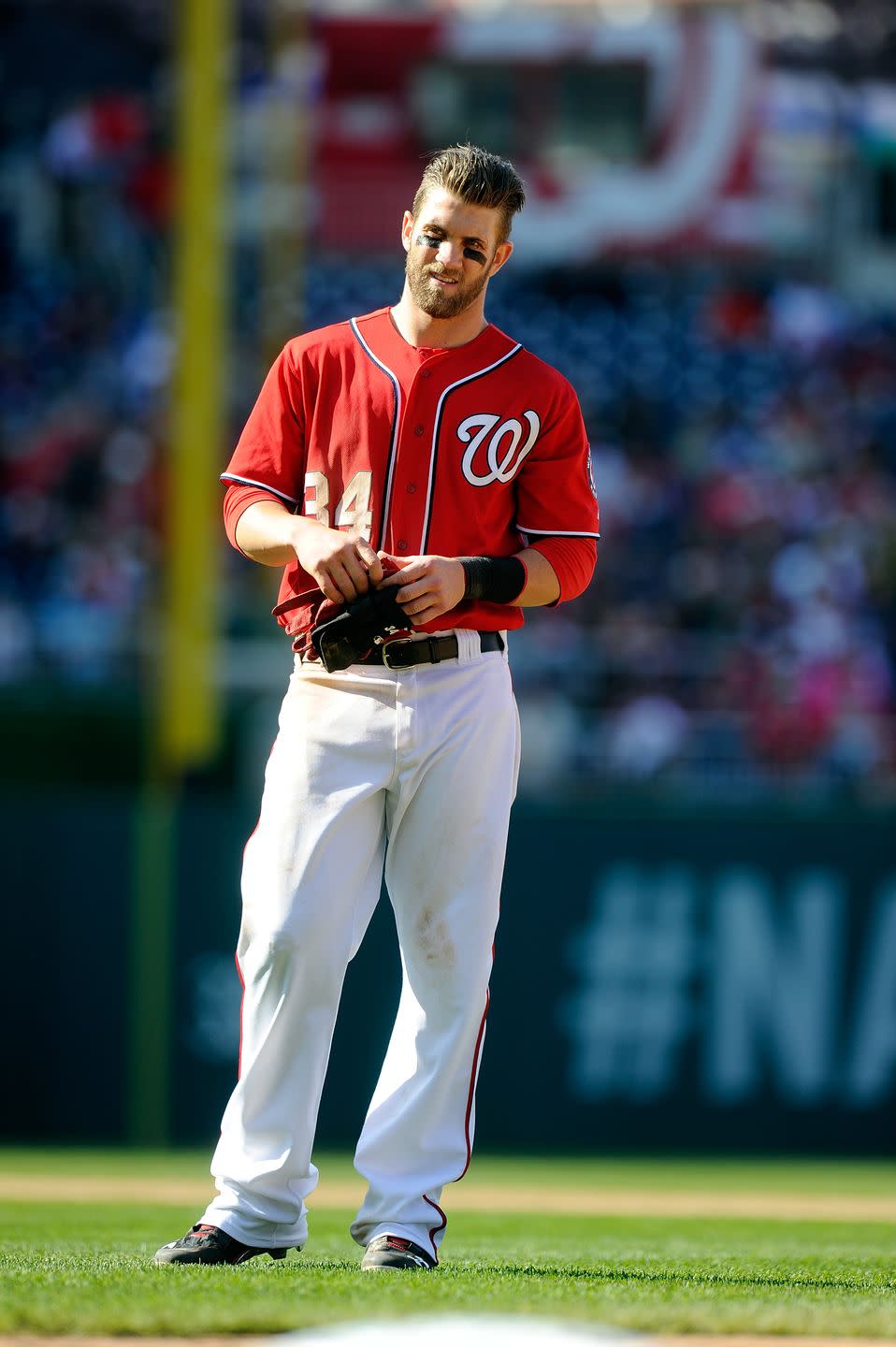
But there's a catch. (No pun intended.)
As the official MLB rules state, "No player whose uniform does not conform to that of his teammates shall be permitted to participate in a game." So if one player wears a cap, all players must wear a cap. (Suffice to say, players usually wear caps.)
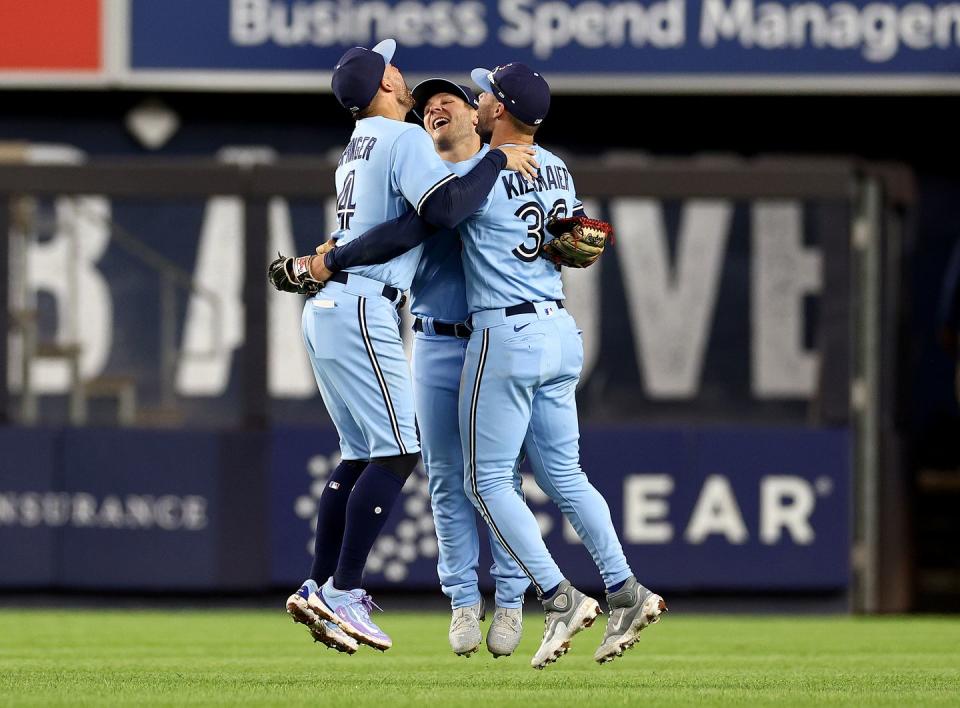
Caps must be worn a certain way.
According to sports writer Hal McCoy, players can wear their hats however they'd like while not playing (like during interviews, batting practice, etc.). When it gets to game time, though, all hats must face forward. The first team to adopt the hat trend in the first place? The New York Knickerbockers, who reportedly began wearing straw hats in 1849. A more traditional take on the baseball cap made its debut in the late 1850s and has since evolved into today's baseball cap.
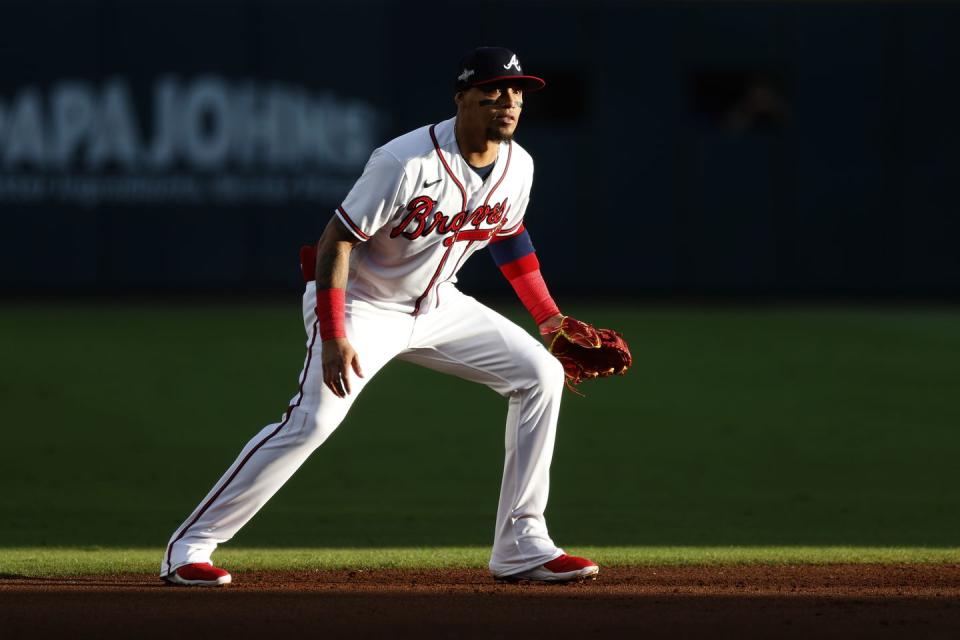
But there's an exception to that 'game time' rule.
Catchers and players participating in the Home Run Derby have been permitted to wear their hats backward, as Ken Griffey Jr. notably did throughout his career.
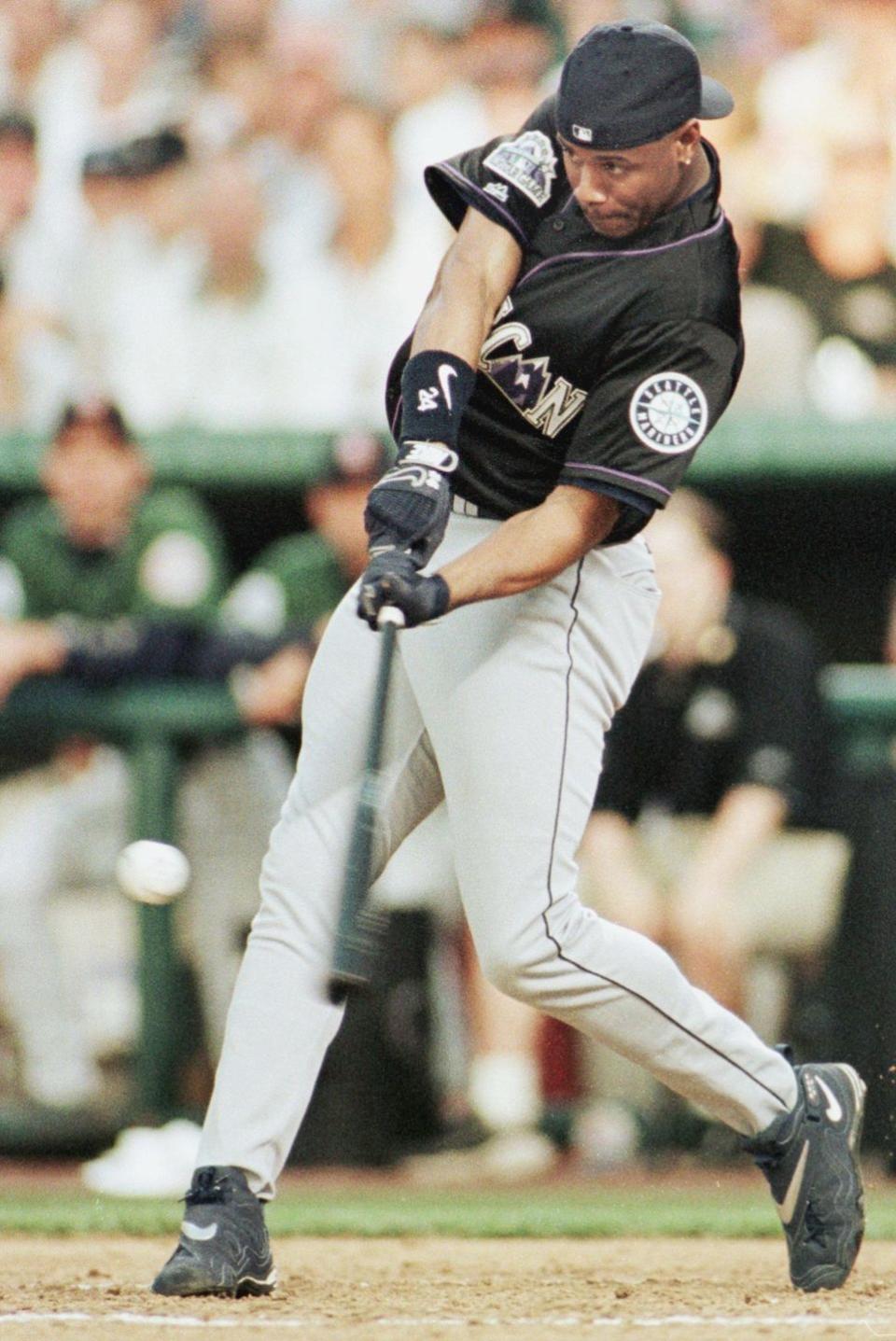
Batters have to wear helmets, but major leaguers have options.
Some players opt for a double ear-flap helmet, while others prefer the mandated single ear-flap helmets that only cover the ear facing the pitcher. When it comes to the minor leagues, things get a little stricter: Minor league players must wear double ear-flap helmets.
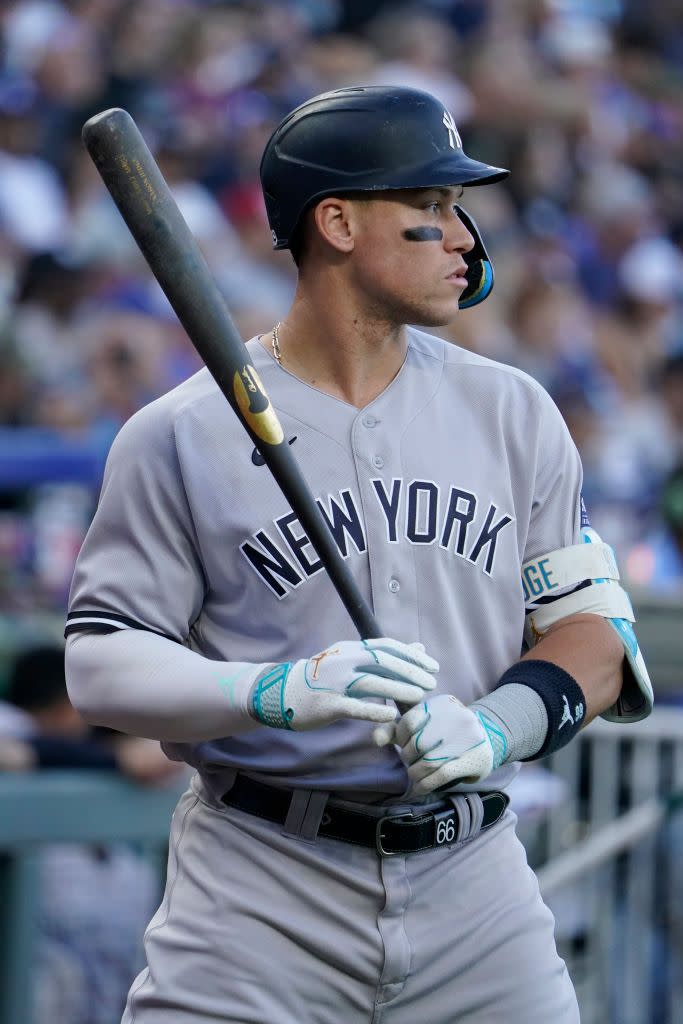
Players can't wear any old undershirt they want.
That's because, according to the official rules, any exposed part of a player's undershirt must be a solid team color. League-wide exceptions are made for occasions like Mother's Day, when players sport pink to honor moms.
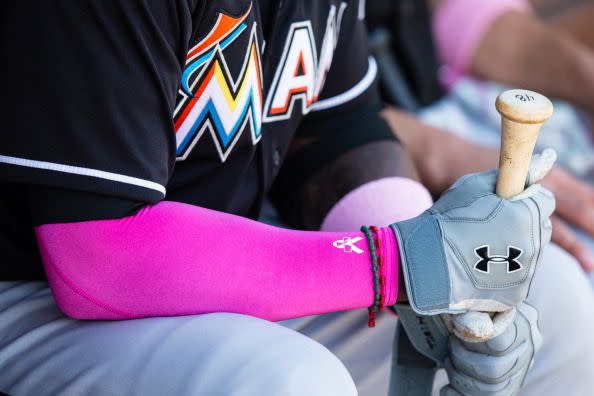
The undershirt rules get stricter for pitchers.
They're the only players who aren't allowed to have "numbers, and/or letters, insignia attached to the sleeve of the undershirt," likely because it could be considered distracting for opposing players at bat.
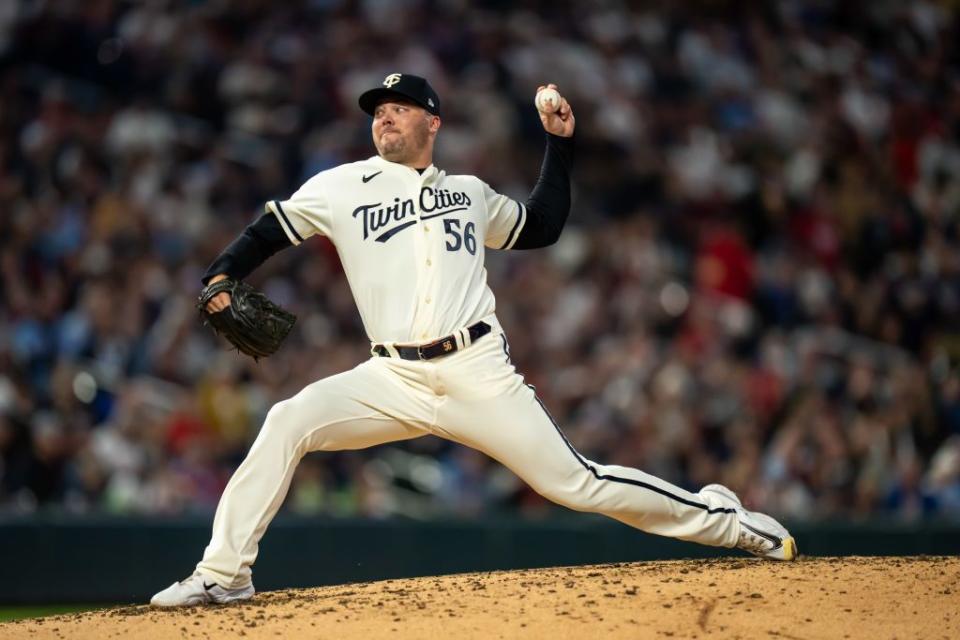
Everyone on the team must wear a belt.
Okay, MLB's rulebook does not explicitly state that players must wear belts, but the rules do say that all players must wear a uniform identical in style. Every single MLB team's uniform currently includes a belt, so it looks like they're here to stay!
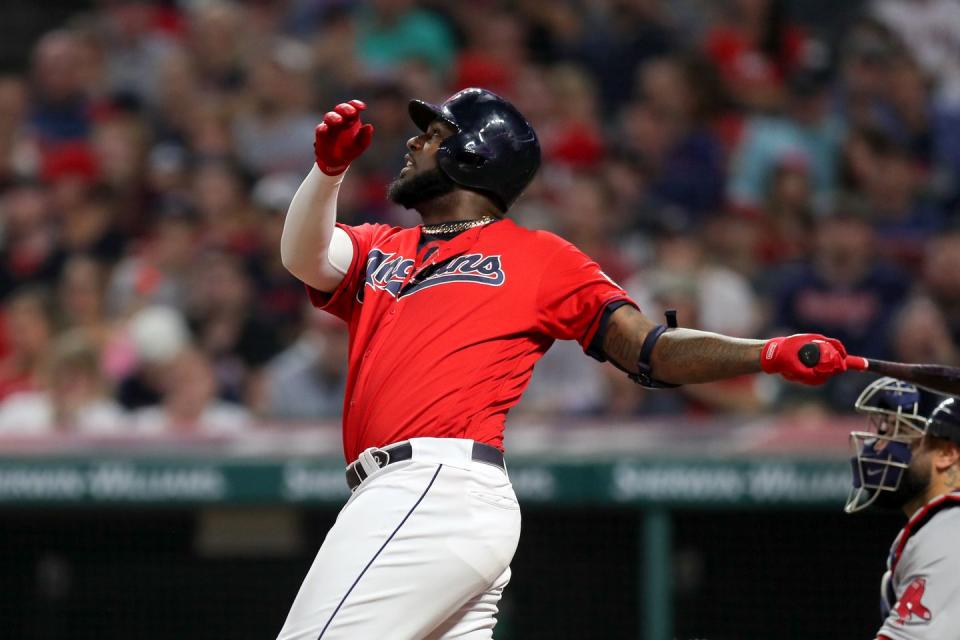
MLB players are permitted to wear jewelry—but doing so is risky.
Some players, like Ronald Acuña, prefer to layer up their necklaces, while others wear simple chains. Diamonds on the field can pose a risk though: In a 2018 game, Yoenis Cespedes broke his necklace while sliding into second base, leaving sparkling gems scattered across the field.
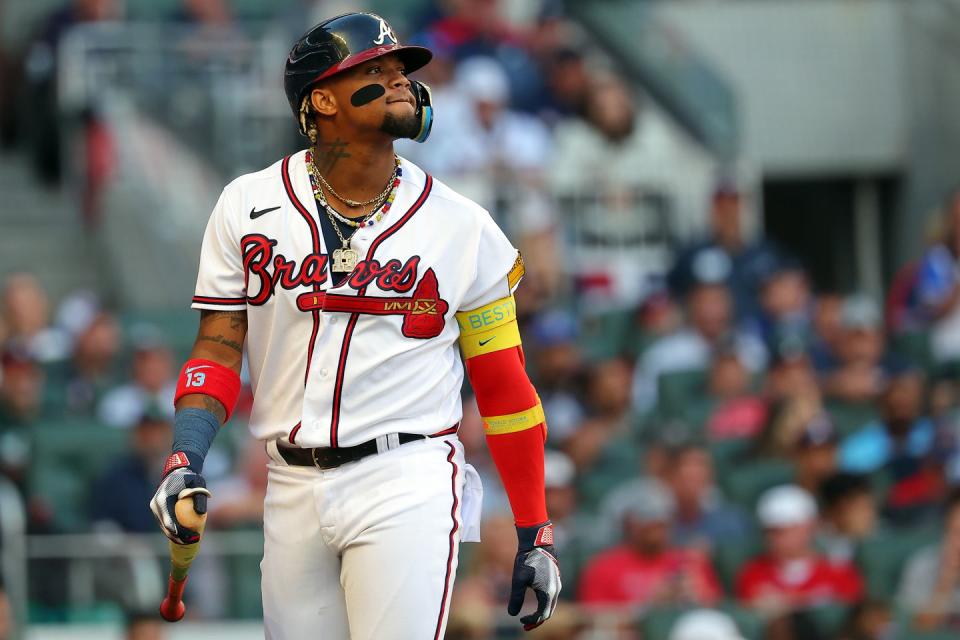
Cleats have to follow guidelines—albeit less strict ones than in the past.
In 2019, MLB changed the rules around cleats to allow for more vibrant styles that express player individuality. Prior to this, at least 51 percent of a player's cleat had to feature one of their team's primary colors. Now, cleats can feature black, white, gray, any uniform colors, or any additional colors approved by individual teams.
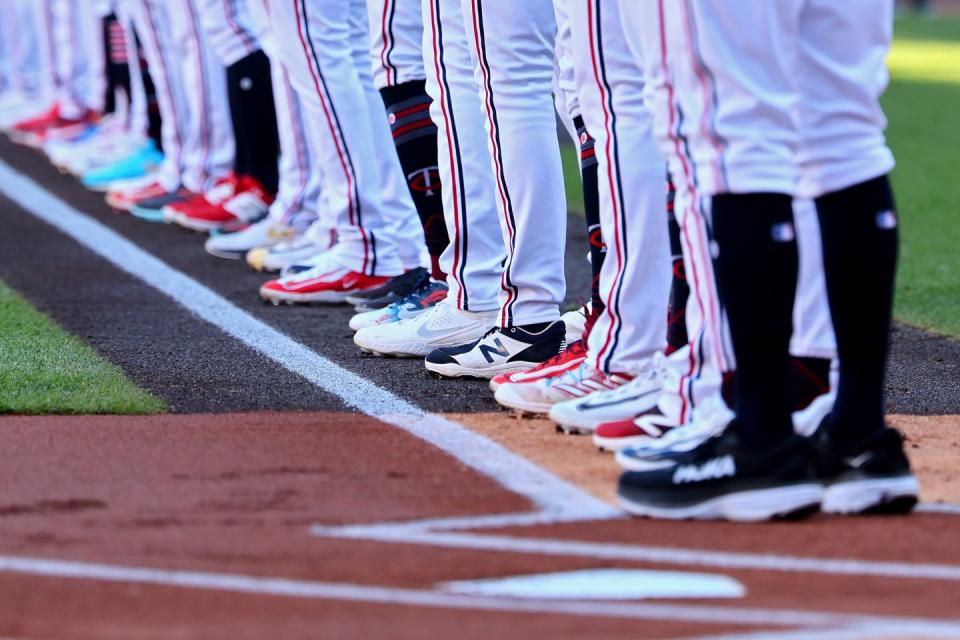
Even coaches have to wear a full uniform.
According to the official rulebook, anyone who wishes to be on the field must be in uniform, including coaches. In fact, the official definition of a coach is as follows: "A team member in uniform appointed by the manager to perform such duties as the manager may designate, such as but not limited to acting as base coach."
Managers, on the other hand, are not required by the rules to dress in uniform—but as tradition has it, they do.
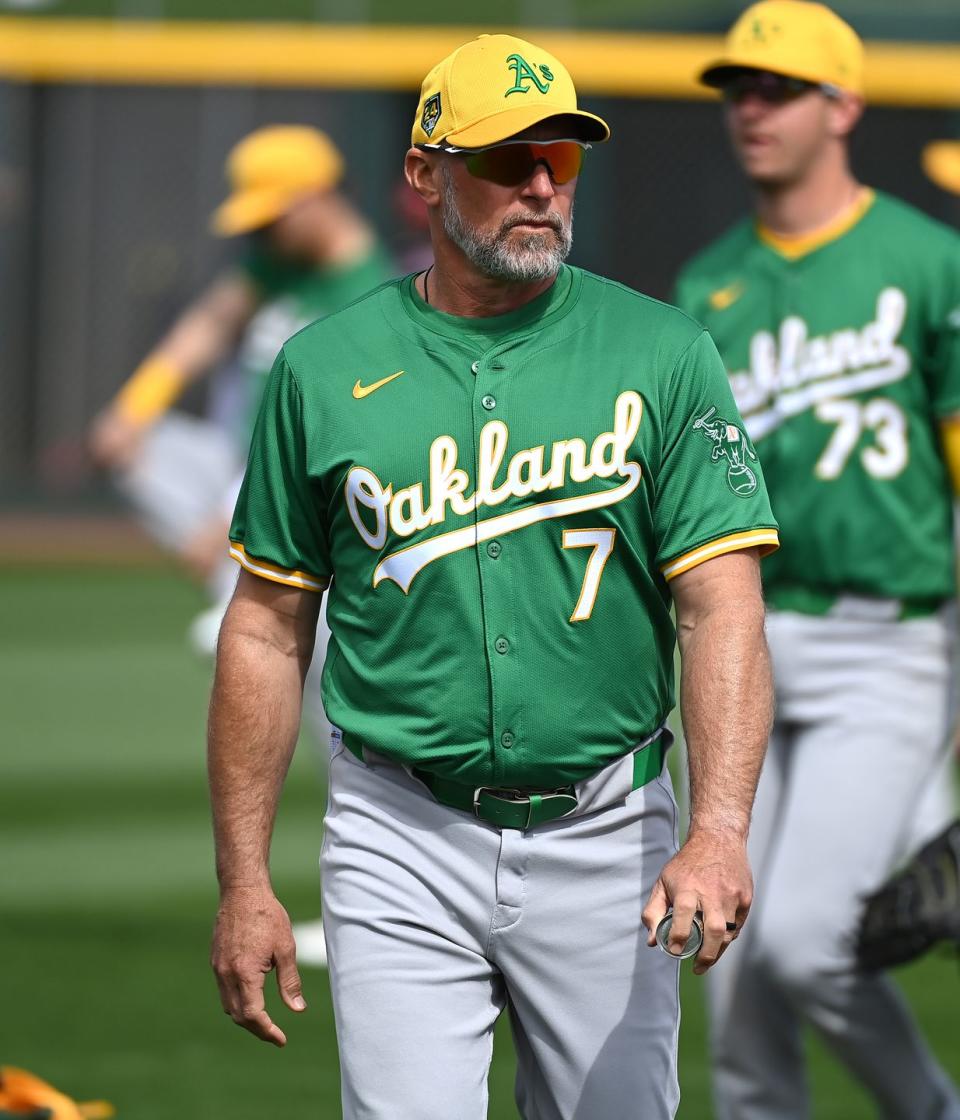
Opposing players can't chat on the field during the game.
While MLB rules states, "Players of opposing teams shall not fraternize at any time while in uniform," that rule is seldom followed.
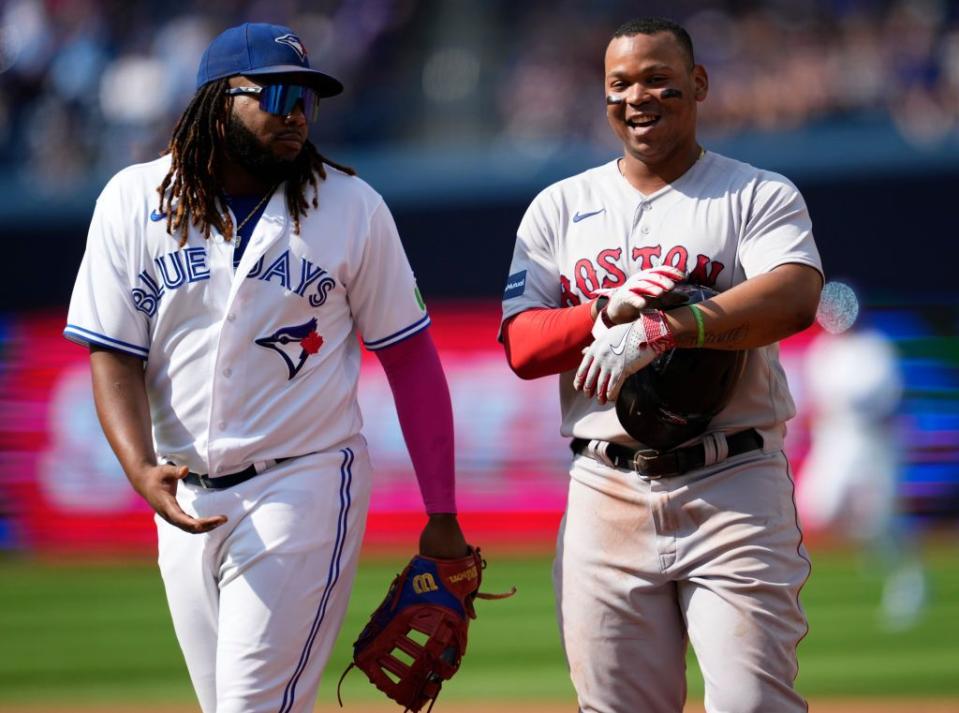
MLB players aren't allowed to age during the season.
Okay, maybe that's dramatic, but it's sort of true! A player's baseball age, typically used in the media, notes how old he is as of July 1 during the season. It establishes one age for the player for the entire season—and it doesn't change, even if he celebrates a birthday. Bryce Harper, for example, turned 31 on the day of 2023's NLCS Game 1 pictured here, but the game was considered to be in his age-30 season.
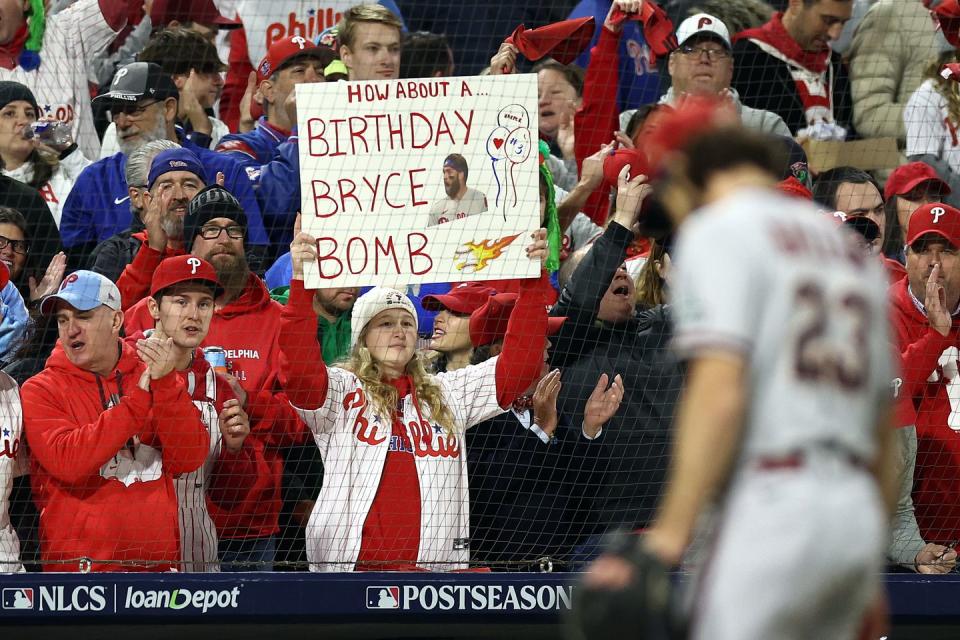
Players are not supposed to react when hit by a pitch.
Who knew MLB had so many unwritten rules that nearly every player follows—and one of the biggest ones? If a player is hit by a pitch, he's supposed to remain even-keeled and not rub the spot where the pitch hit. "There is a code of masculinity that exists in this game," former catcher John Baker said in 2012.
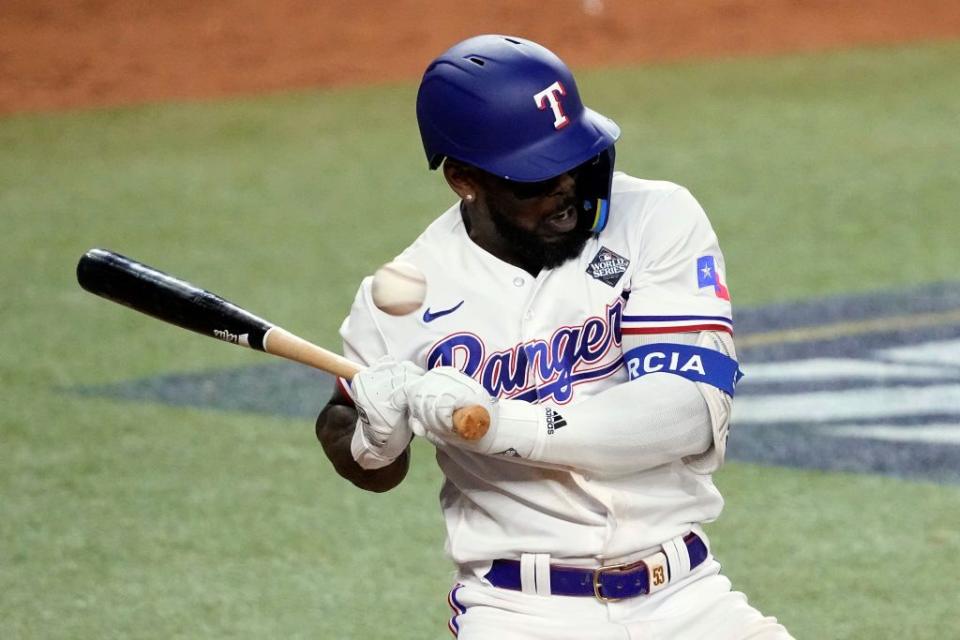
They shouldn't walk in front of the catcher either.
Another unwritten rule establishes the expectation that players walk behind the catcher and umpire when approaching the batter's box. According to MLB writer Anthony Castrovince, it's a "matter of etiquette."

Pitchers only have seconds to throw a pitch.
In 2023, MLB released several new rules designed to make the game more efficient. One of the biggest was the introduction of a pitch clock. Pitchers now have 15 seconds to throw a pitch when bases are empty and 20 seconds when there are runners on base. So, what happens when the pitch isn't released in time? The pitcher is charged with a ball.
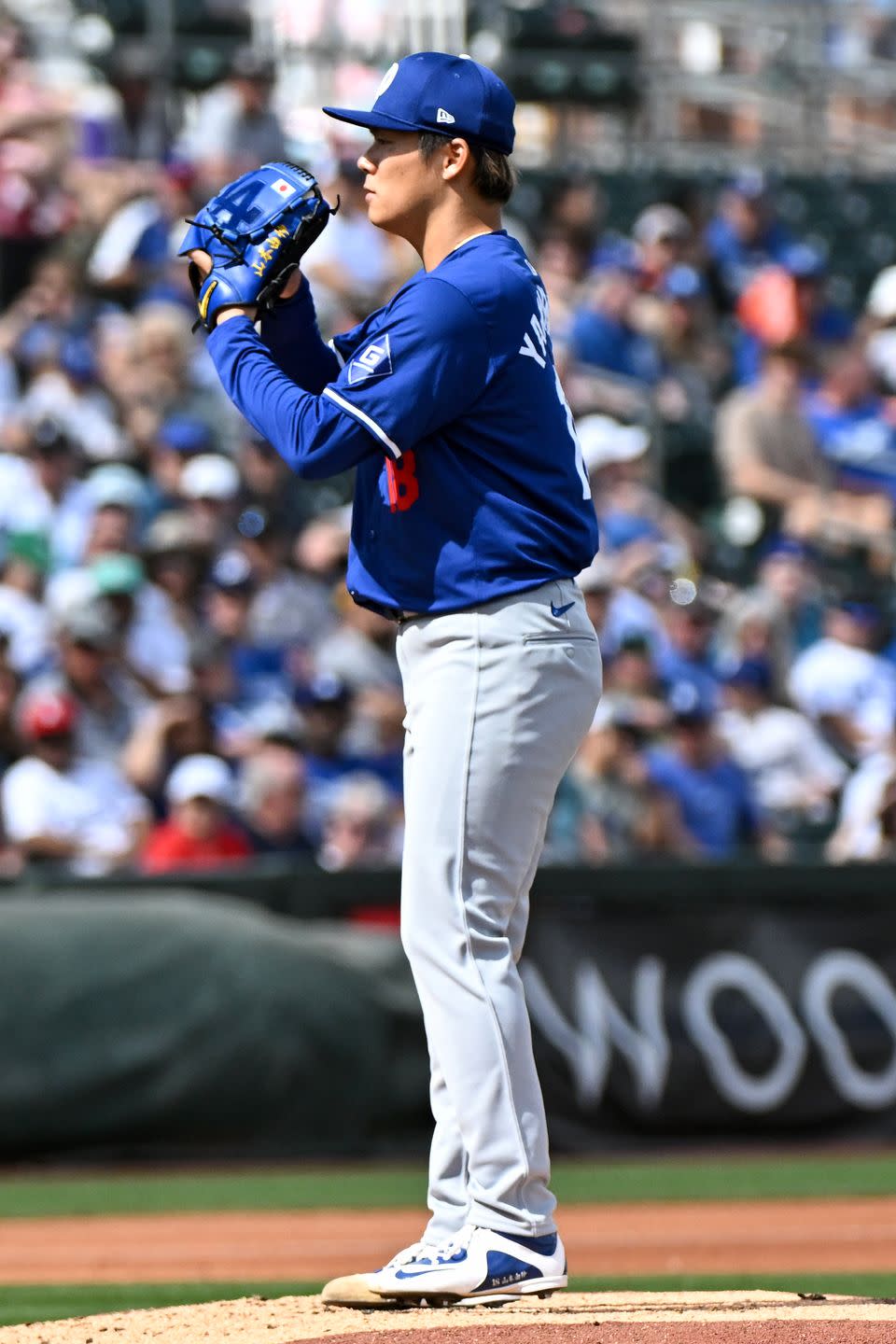
Batters are held to the pitch clock too.
If a batter isn't in the box and ready to swing within eight seconds remaining on the clock, he will receive a strike. No player is immune—not even beloved former Dodger Cody Bellinger, who received a violation after a standing ovation.
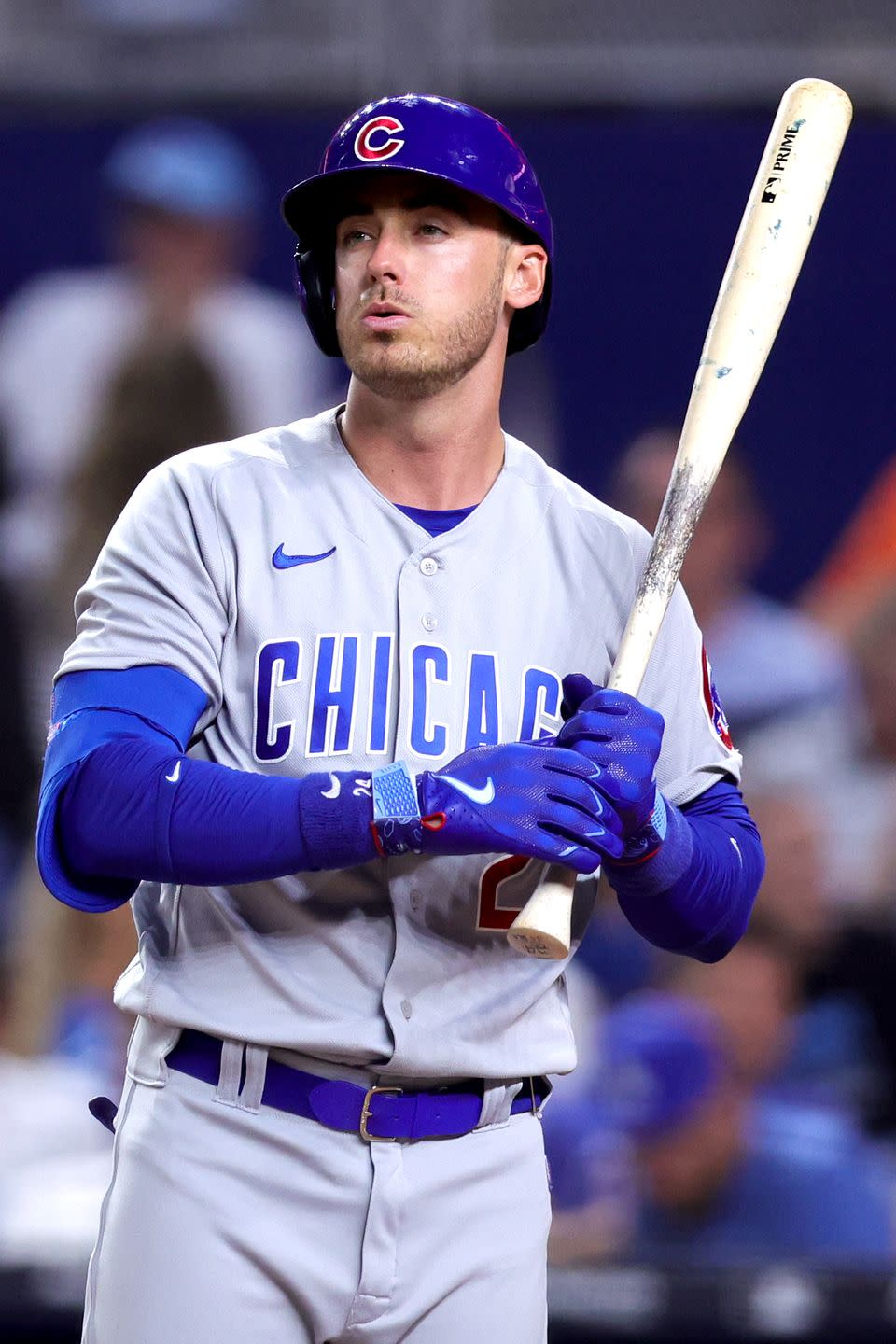
Pitchers have limited time to ask for a new ball.
They can ask for a new ball in the middle of an inning, but they must do it with at least eight seconds left on the pitch clock. According to ESPN, if a player requests a new ball several times in a row, it might result in a warning at the discretion of the umpire.
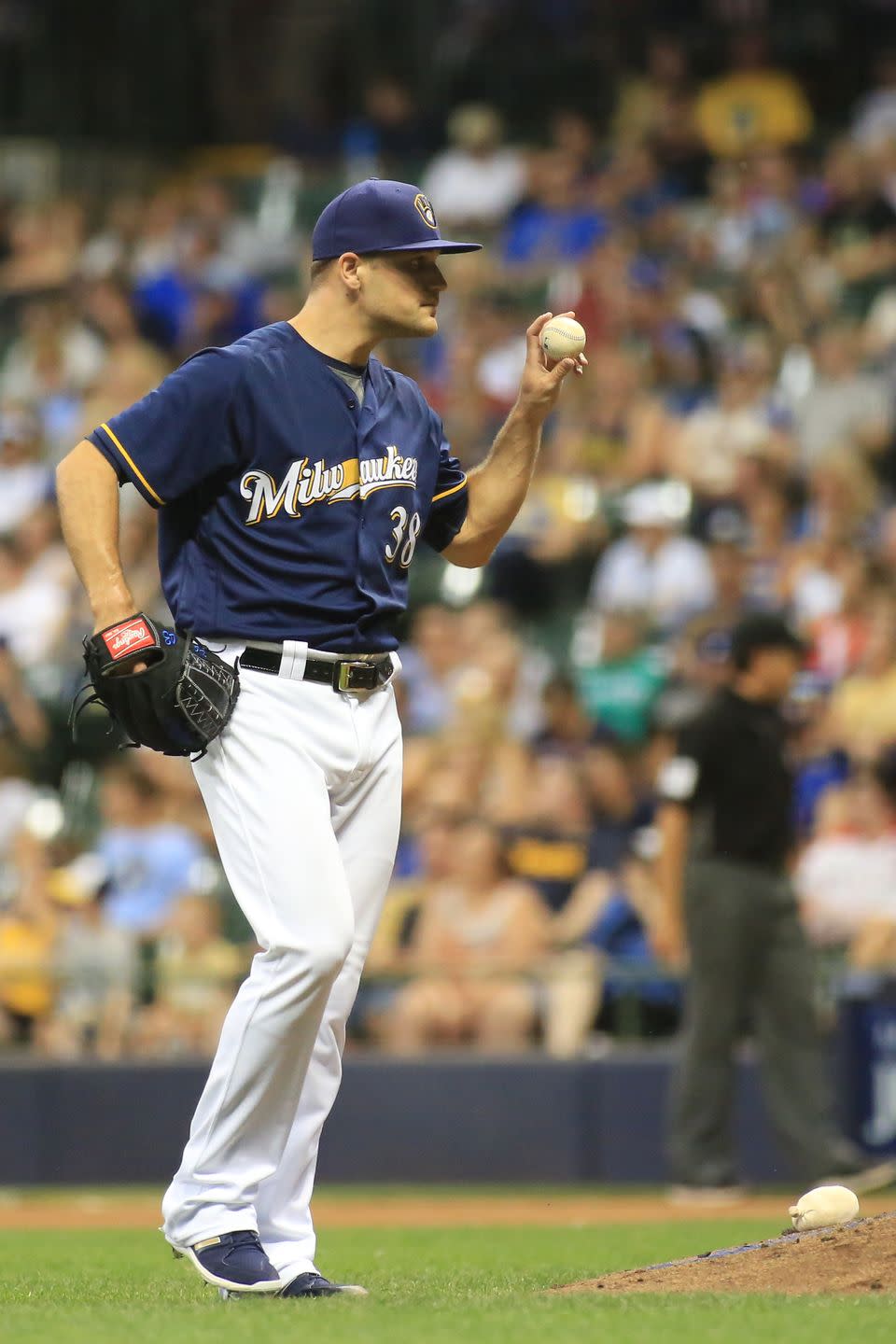
When a manager or player is ejected, he can't stay in the park in uniform.
As the official rules state, "He shall remain in the clubhouse or change to street clothes and either leave the park or take a seat in the grandstand well removed from the vicinity of his team's bench or bullpen." That's right–they can technically take in the rest of the game from the stands if they so choose. What they can't do? Reenter the dugout in disguise, as Mets manager Bobby Valentine did in 1999, resulting in a two-game suspension and a $5,000 fine.
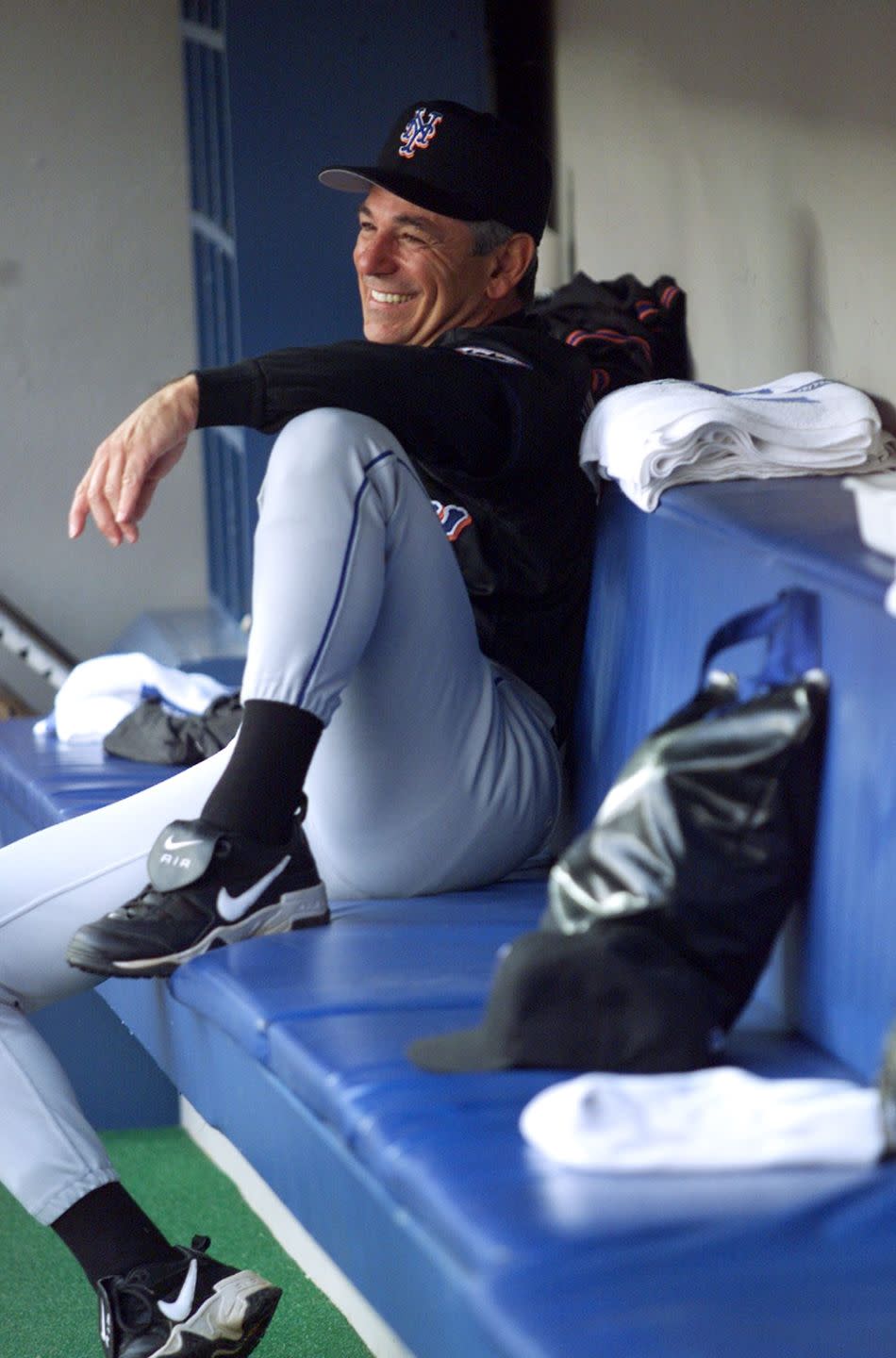
Ambidextrous pitchers can't get sneaky.
Should an ambidextrous pitcher take the mound, he must reveal which hand he'll be pitching with before the batter reaches home plate. Wearing his glove on his non-throwing hand typically does the job. He is not allowed to switch hands until the batter is out, reaches a base, or benched for a pinch-hitter.
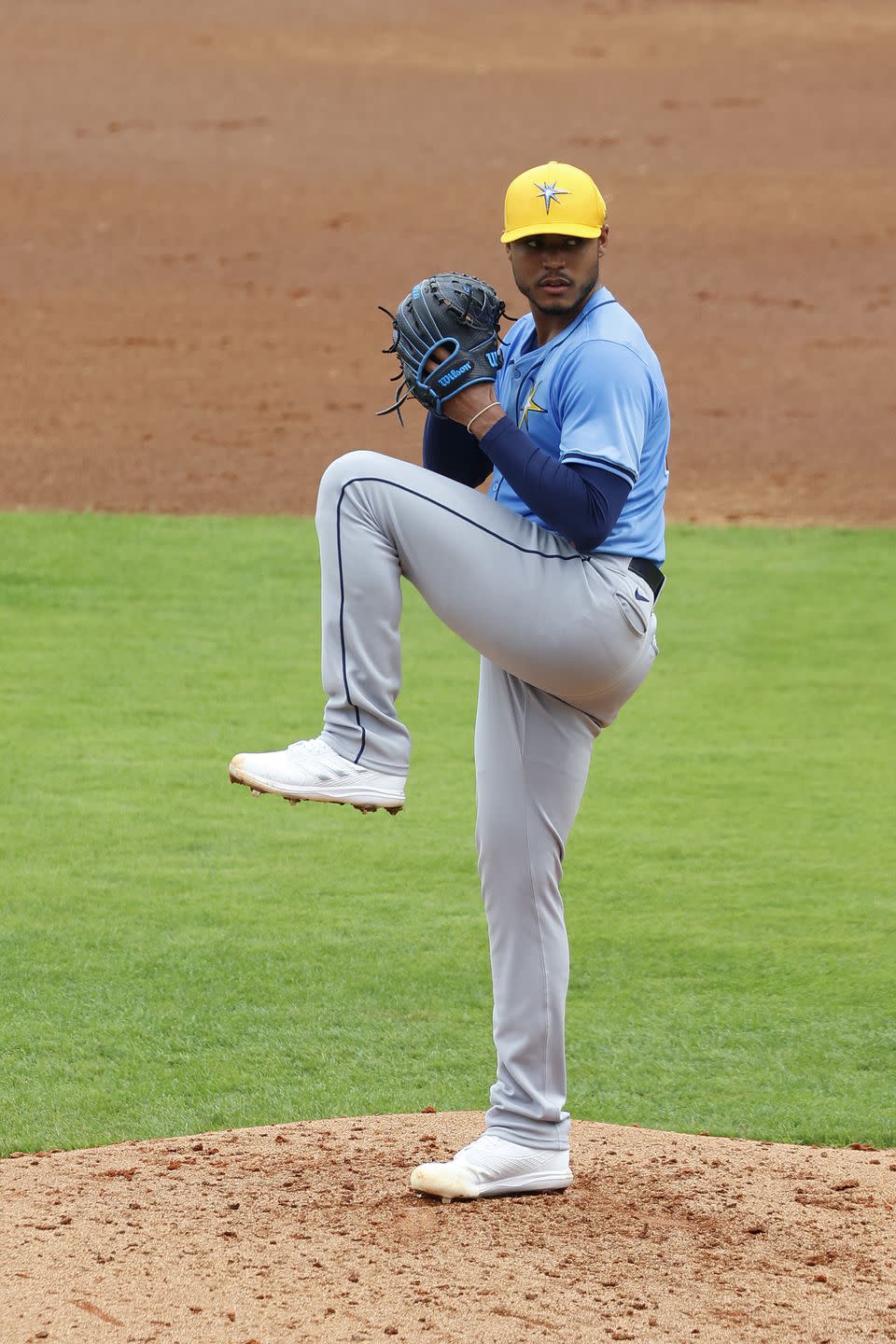
But they can switch hands under one condition.
An injury is the one exception that allows a player to switch to the opposite hand in the middle of a plate appearance, but he is forbidden from using the injured hand again for the rest of the game.
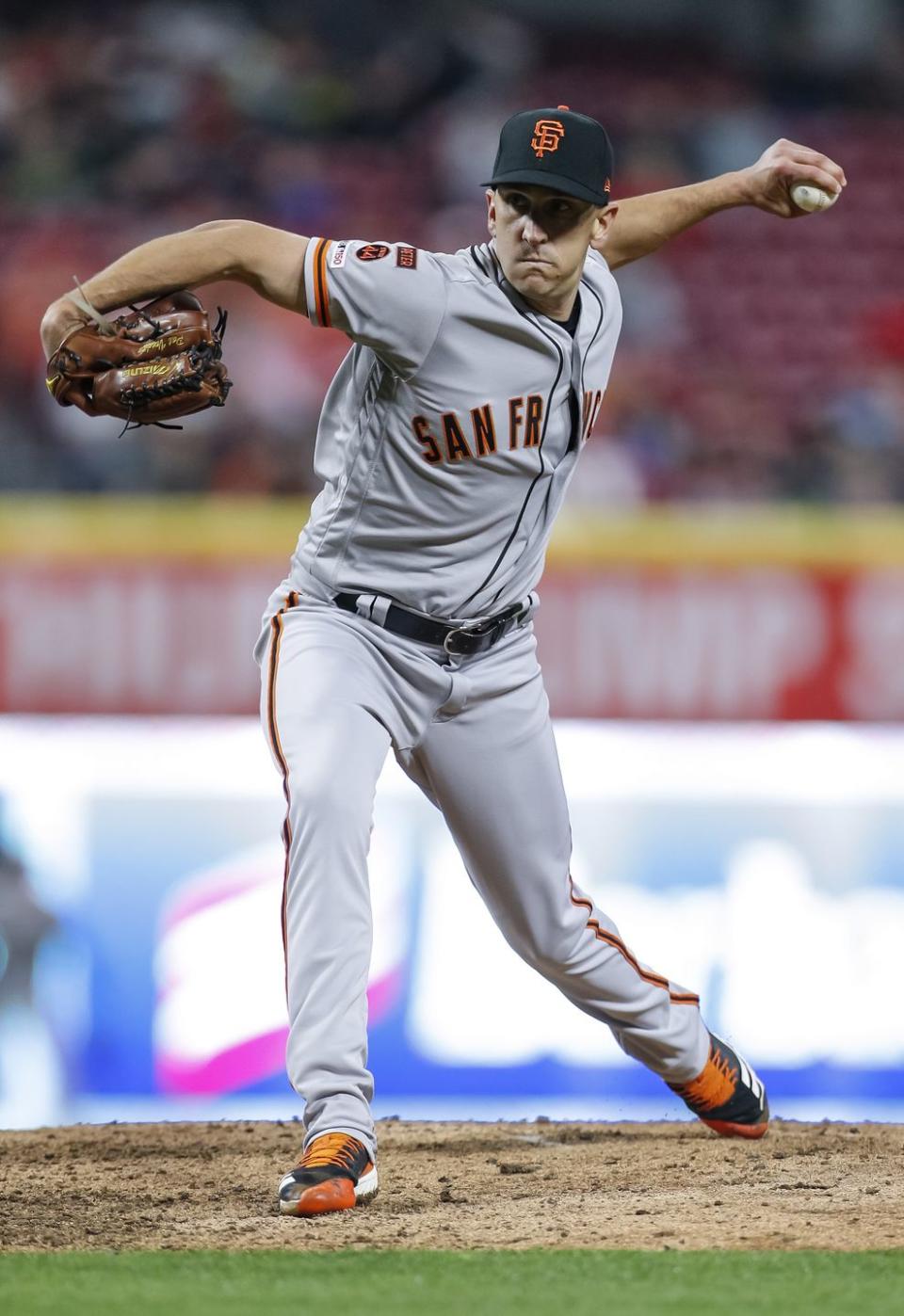
A pitcher cannot 'doctor' the ball in anyway.
Chances are, you've caught a game where a pitcher is searched by the ump for sticky substances in between innings. This includes anything from dirt to saliva, sunscreen, or pine tar. While there are several league-approved substances to help grip the ball, the rules are so intense that a pitcher is not even allowed to touch his mouth while in contact with the pitching rubber.
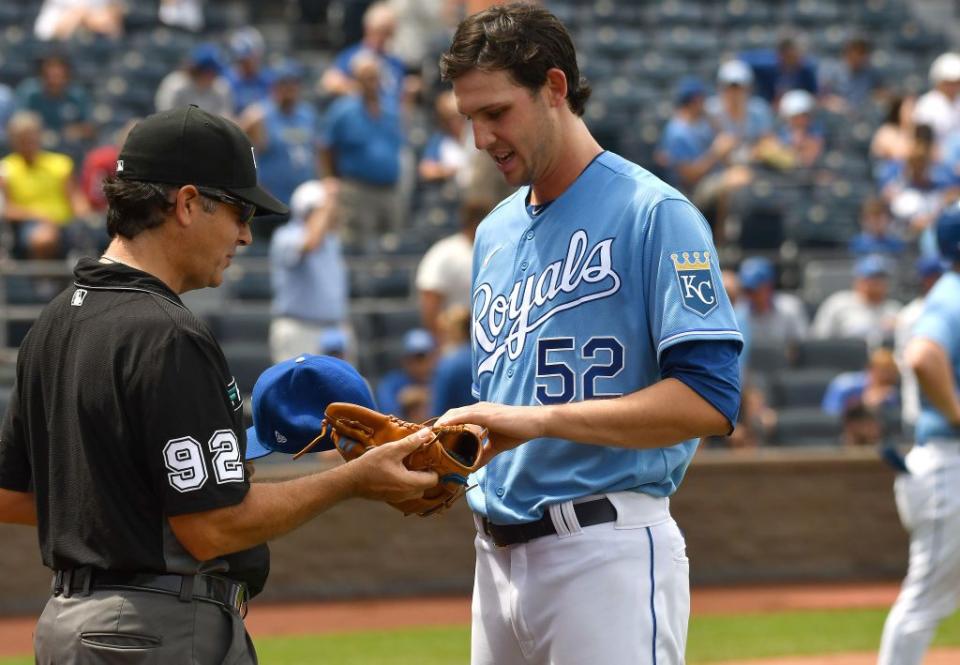
Unlimited and untimed mound visits are no longer allowed.
Prior to 2016, mound visits—in which a member of the coaching staff can approach the, you guessed it, mound, to speak to the pitcher—had no time limits. In 2016, these were shortened to 30 seconds to speed up the pace of the game. By 2019, the amount of visits was limited, too, to only five mound visits per game. One enduring restriction through the years? If the same pitcher gets two visits in one inning, he is removed from the game.
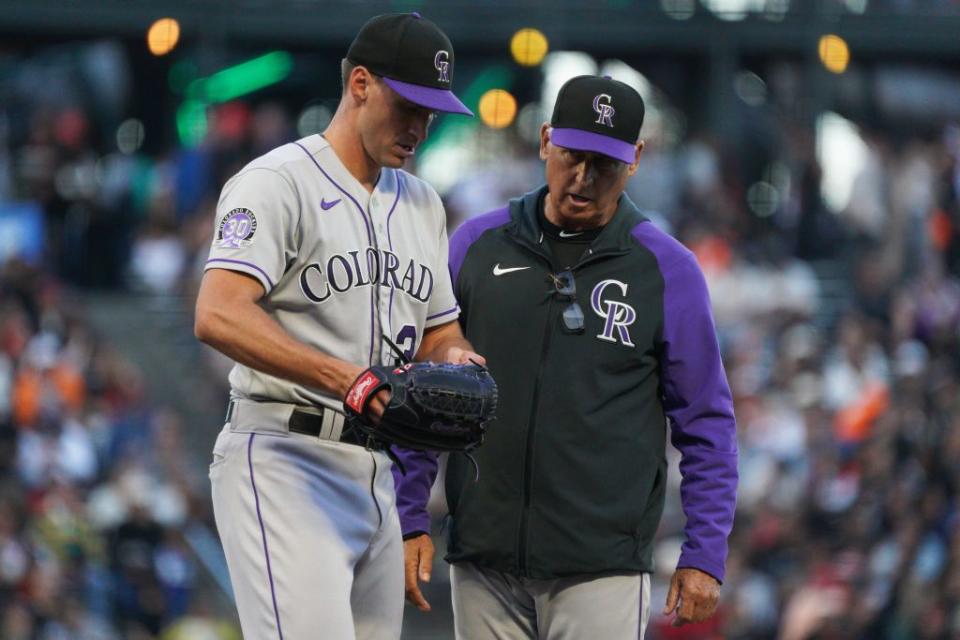
A pitcher must face at least three batters.
MLB heard fan complaints that the game was too slow and enforced a slew of pitching rules to boost the pace. Now, pitchers must face at least three batters before being removed from gameplay. The only exception is injury or illness.
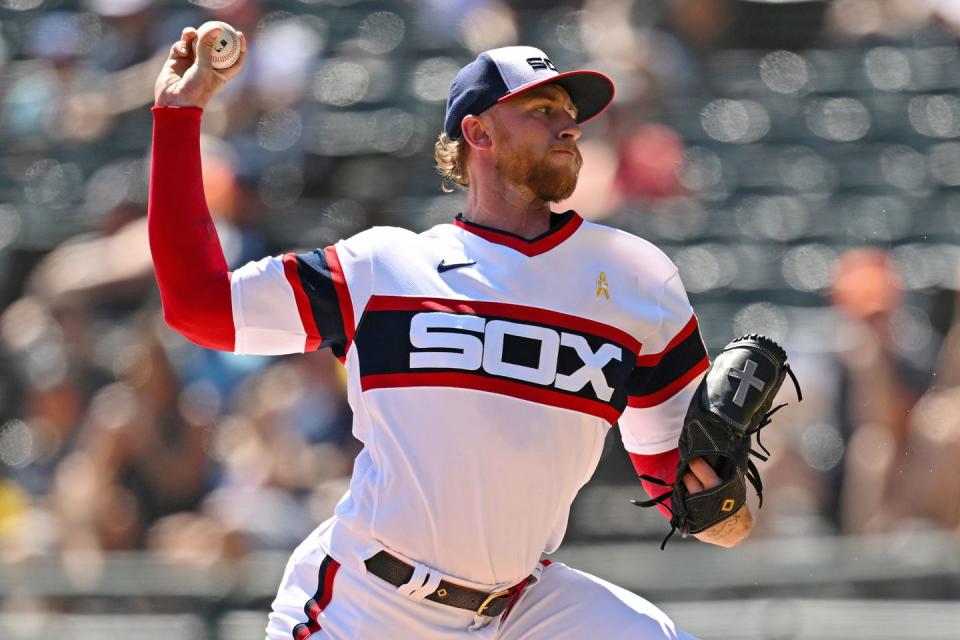
Batters can't bat out of turn.
It should come as no surprise that batting order is very important—and should a team bat out of turn, consequences vary depending on timing. If an umpire or either team notices an error while the wrong batter is at the plate, the team in question can swap in the correct player, who will then take on the incorrect batter's count. But if the the error is caught after the wrong player's at bat, outcomes—which include the incorrect batter's at bat being deemed completely void—vary. Long story short, it gets complicated, so the transgression is best avoided.
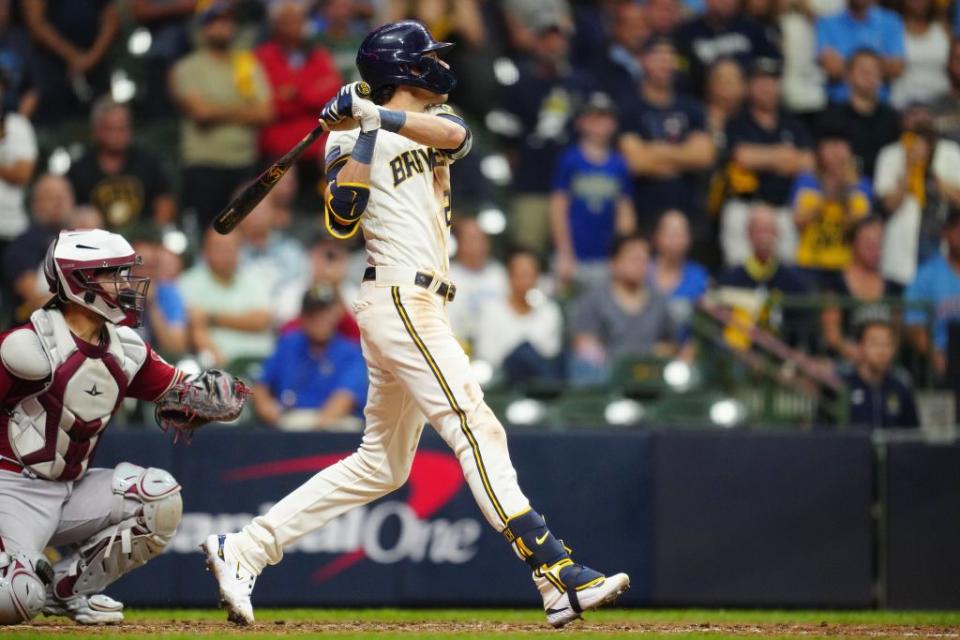
Players can change their jersey number, but it'll cost them.
According to Sports Illustrated, as of 2018, they must make the July 31 deadline set by MLB. If they miss it, they can still change numbers for a steep price—and MLB will only approve the number swap if players agree to buy all of the existing apparel with their old numbers on it.
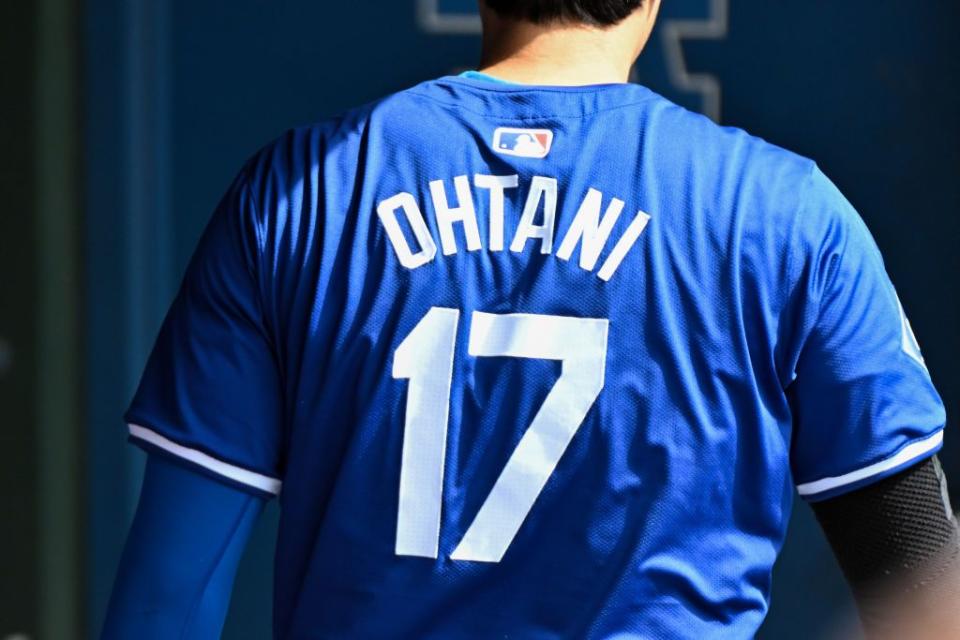
Teammates shouldn't talk about a potential no-hitter.
Is there anything more thrilling than witnessing (or, you know, pitching) a no-hitter? Other than your team winning the World Series, probably not. So, out of fear of jinxing the feat, one of MLB's unspoken rules is that mum's the word in the dugout until the deed is done. (In fact, according to MLB writer Anthony Castrovince, teammates are essentially expected to "ignore" the starting pitcher throughout the potentially history-making game.) Honestly, superstitious fans should follow this rule too!
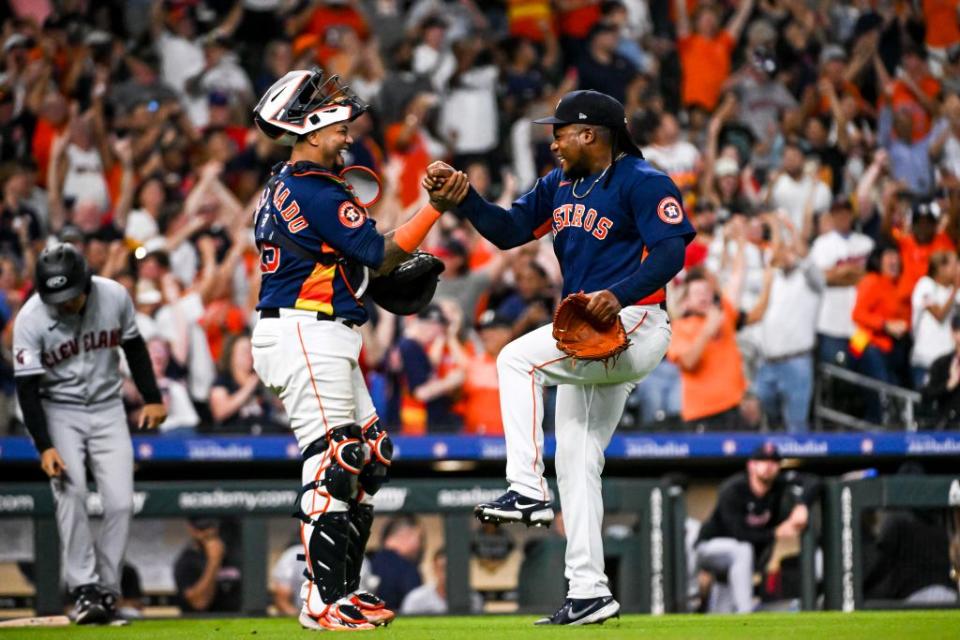
Smokeless tobacco is banned for all new players.
Over the last decade, MLB has been attempting to curb the use of smokeless tobacco among major leaguers. In 2016, the player's Collective Bargaining Agreement banned the use of smokeless tobacco for all new players. The rule did not apply to any player who already had played at least one day in the major leagues at the time when the rule was passed.
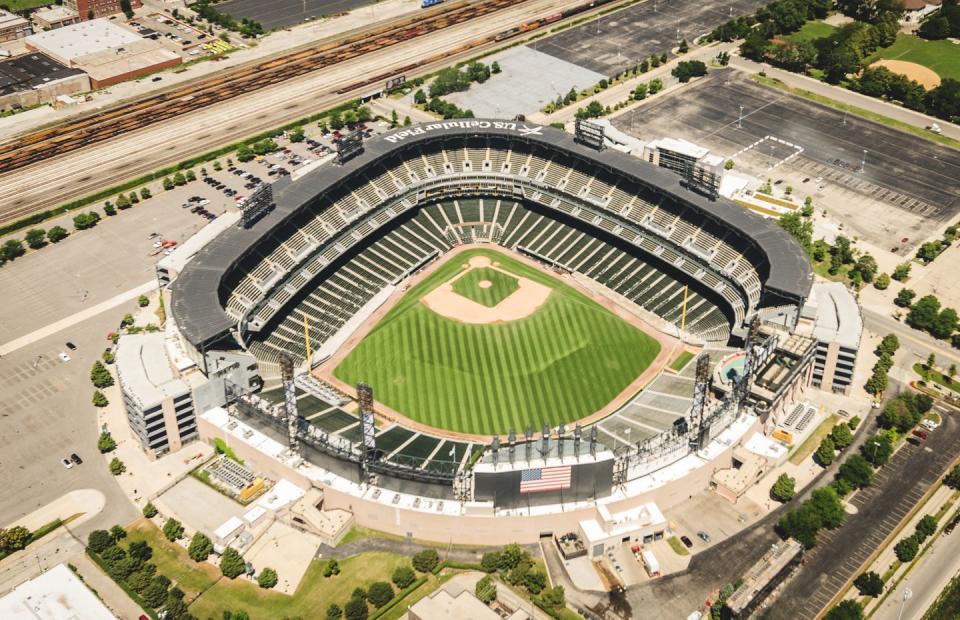
The tobacco rules get more intense once fans enter the stadium.
According to BetMGM, any player who had been grandfathered into being allowed to chew tobacco is not permitted to take the field or enter the dugout with smokeless tobacco once fans are in the stadium. As of early 2024, CBS News says smokeless tobacco has been banned at 16 of the 30 MLB stadiums.
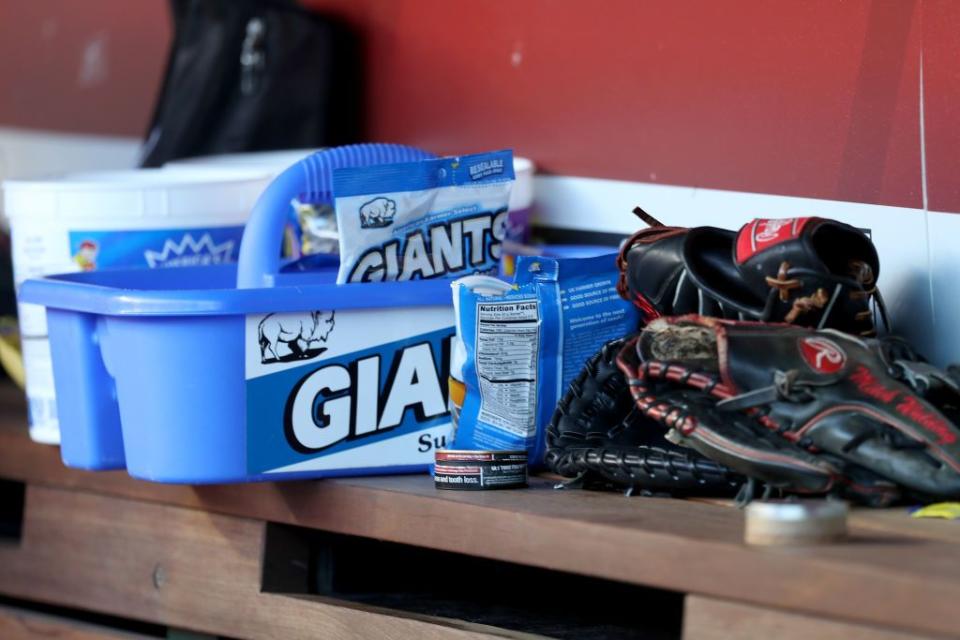
Nicotine pouches are still permitted.
In the wake of the tobacco ban, many players have turned to Zyn nicotine pouches, which are still allowed under MLB rules. Pirates pitcher JT Brubaker told FOX Sports in 2023 that Zyns have now become a part of his usual game-day routine, and noted that they're "taking over."
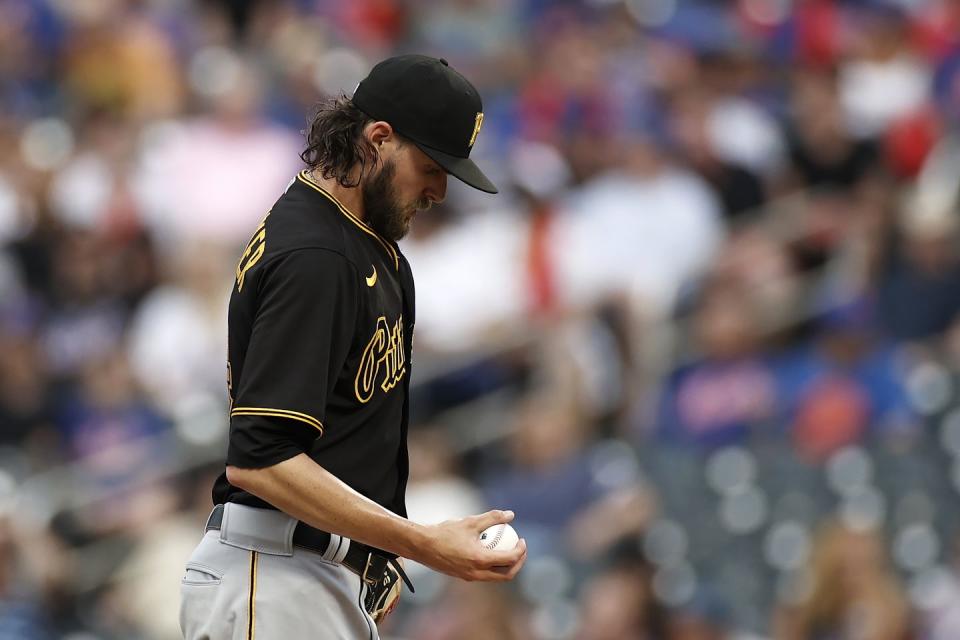
If a pitch gets stuck on the catcher, the runner gets to advance one base.
You've probably seen a catcher or umpire get hit by a pitch (that protective hardware comes in handy!), but have you ever spotted the ball getting lodged in their gear? Should a pitched ball get stuck on any part of the catcher or umpire's "paraphernalia," runners get to advance one base.
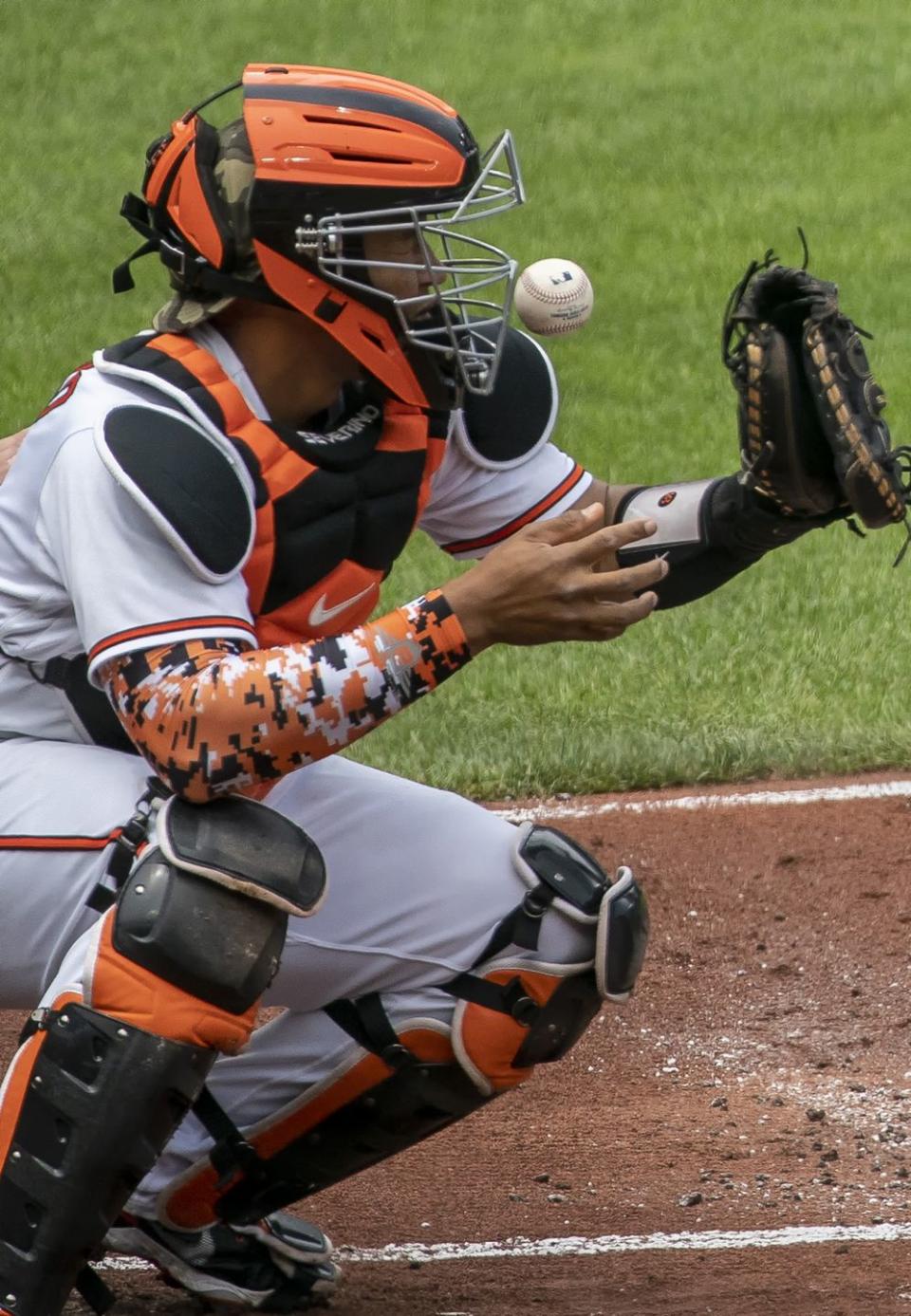
Sluggers shouldn't gloat about hitting a home run—or should they?
While team home run celebrations in the dugout are becoming a beloved part of the game (the Baltimore Orioles guzzle from the homer hose, the Boston Red Sox lift inflatable dumbbells, and the Cincinnati Reds dress in Viking regalia, to name a few), individual players openly reveling in a home run and "showing up"the opposing pitcher remains a point of contention among traditionalists and players (and fans) hoping to rewrite the unwritten rule. The latter camp seems to be winning though. ("Let the kids play," as they say!) The turning point, perhaps? Jose Bautista's infamous 2016 bat flip.
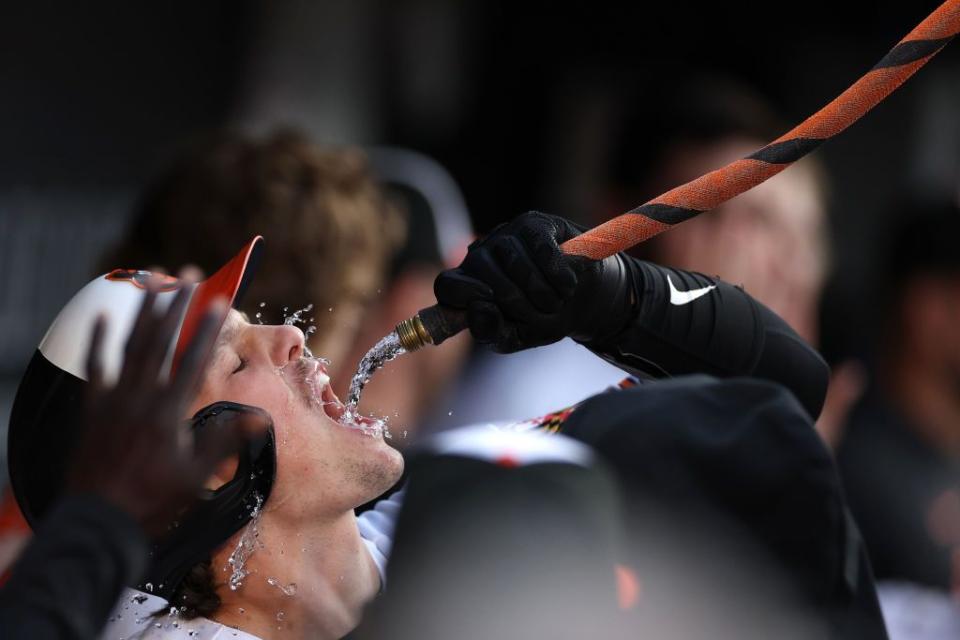
Teams can't rest star players during spring training.
Spring training pulls double duty as both extra practice time and a huge fan event. Fans flock to either Arizona or Florida to take in the spring training festivities (MLB divides itself into the Cactus and Grapefruit leagues for the six weeks of camp). Although this format ensures spring training travel isn't too taxing on the players, there was once an issue with teams not sending their top players to road matches. As a result, according to NBC Sports, MLB issued a new rule stating that teams must bring at least four players from the previous year's roster to road games, and these players must play at least three innings.
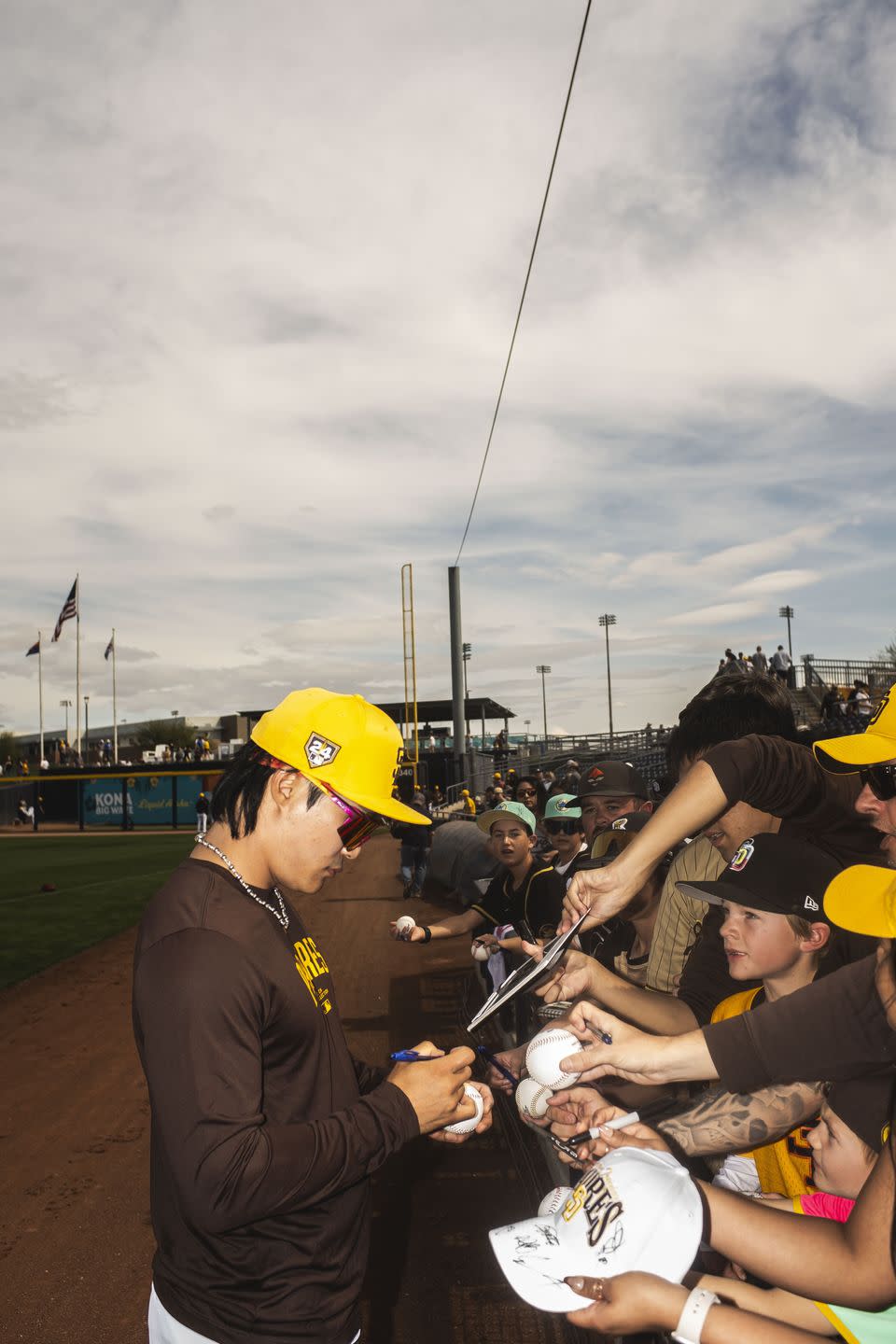
Players should keep all parts of their uniform on.
If they don't, it could change the course of the game. According to the official rules, if a player touches a fair ball with any part of his uniform that has been dislodged from the proper place, each on-base runner is entitled to advance three (!) bases without the risk of being called out.
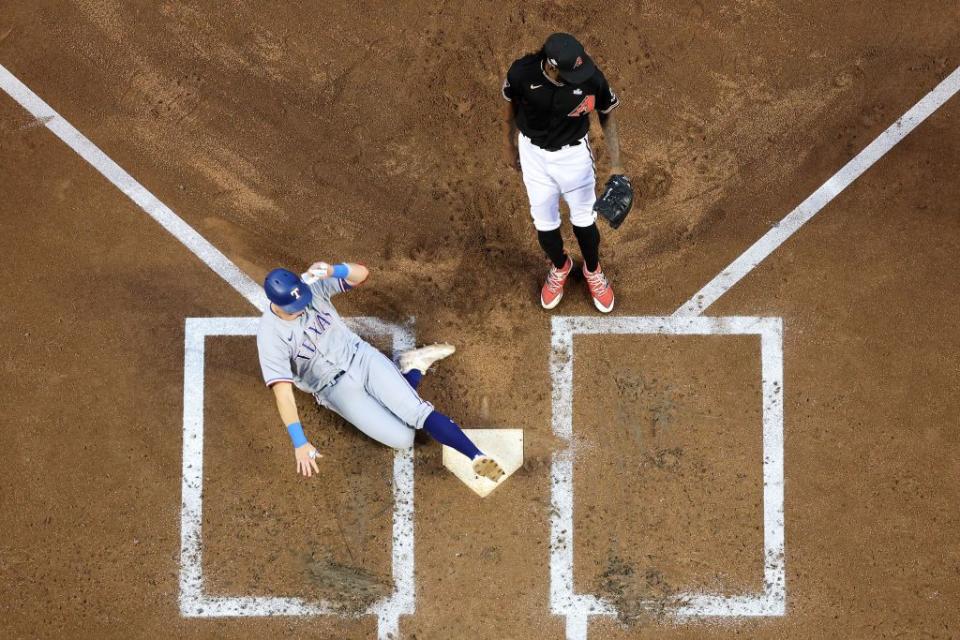
Bats must comply with pretty strict stipulations.
According to MLB's rulebook, all bats used in gameplay must be a solid piece of wood that is not more than 2.61 inches in diameter at its thickest part and no more than 42 inches in length. If a player wants to try out a bat with fun colors or designs, he must get MLB permission.
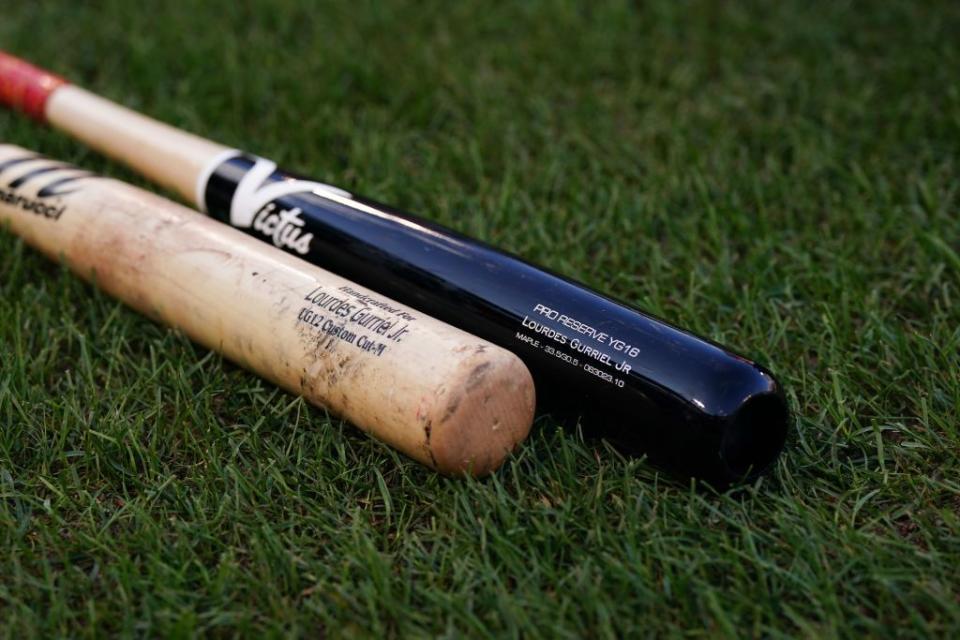
Position players shouldn't step on the pitcher's mound.
As a sign of respect, most players follow this unwritten rule. In 2010, Yankees star Alex Rodriguez caused quite the controversy when he walked across the mound while returning to home plate after a foul ball. "It's just common sense and common courtesy," Hall of Fame pitcher Don Sutton told ESPN about the transgression at the time.
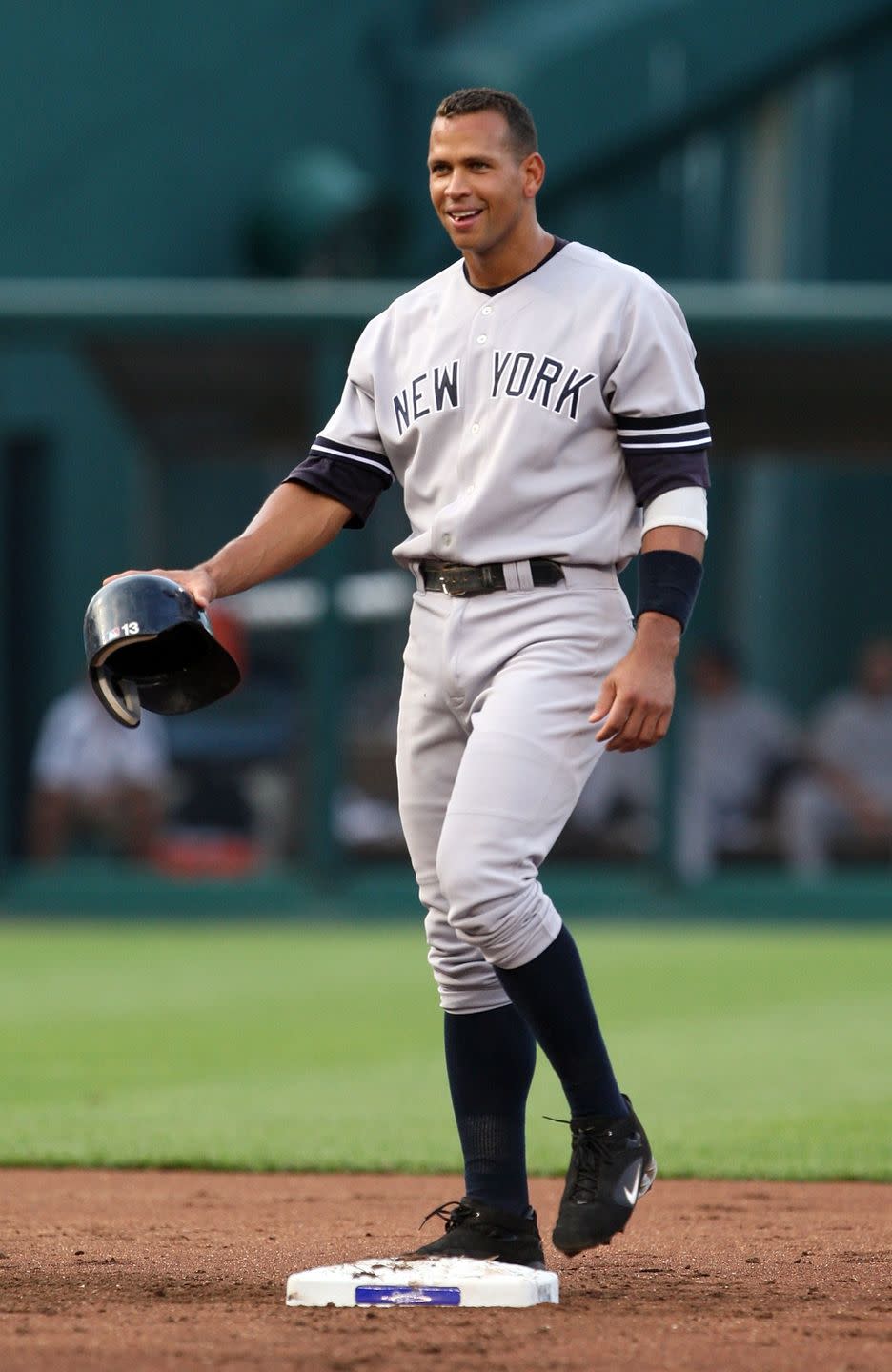
Athletes get penalized for taking performance-enhancing drugs.
MLB has had a long history with performance-enhancing drug usage that has greatly improved over the years, thanks to a revamped testing policy. Although some players are able to secure therapeutic use exemptions in order to take prescribed medications, many stimulants, like Adderall, are banned because players overuse the drug to help them focus.
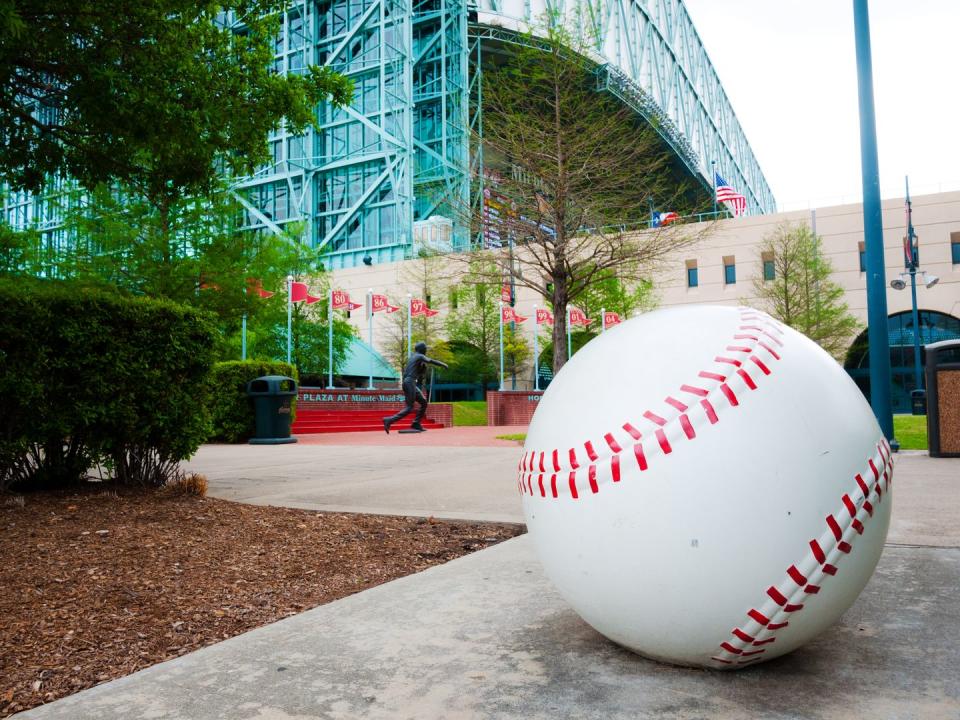
Players are allowed to smoke marijuana, but not without restrictions.
In 2019, MLB officially removed THC products from its list of banned substances, but that doesn't mean players get free rein. According to ESPN, "[MLB] maintains the right to punish players who break existing marijuana laws, such as possession and distribution, as well as for driving under the influence." And they can't show up to work under the influence either. Players are also currently prohibited from participating in any related "commercial arrangements."
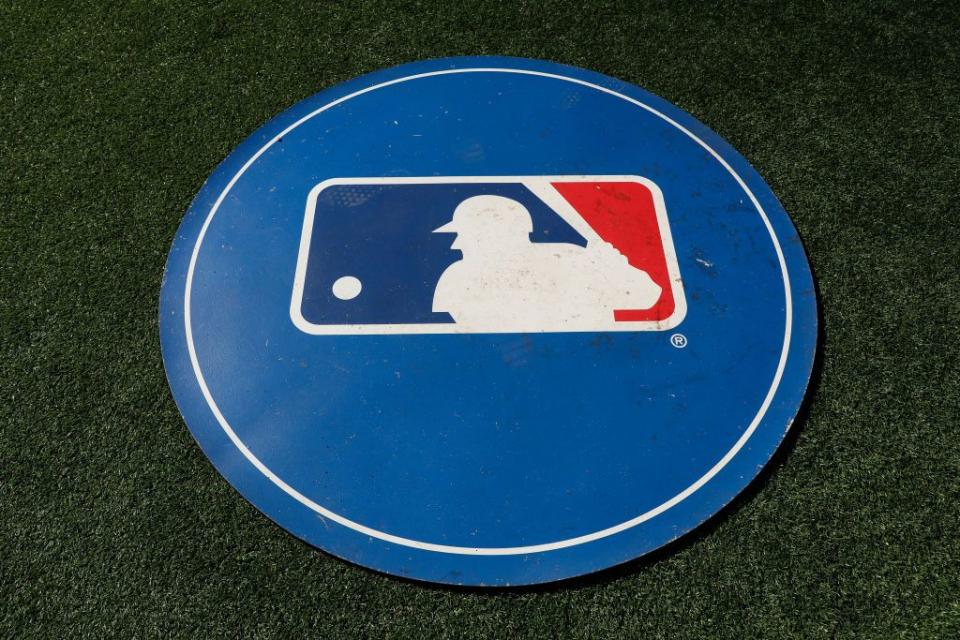
MLB doesn't get to pocket fine money.
Per Fast Company, the money collected from player fines is split between charities and programs that provide financial help to former players.
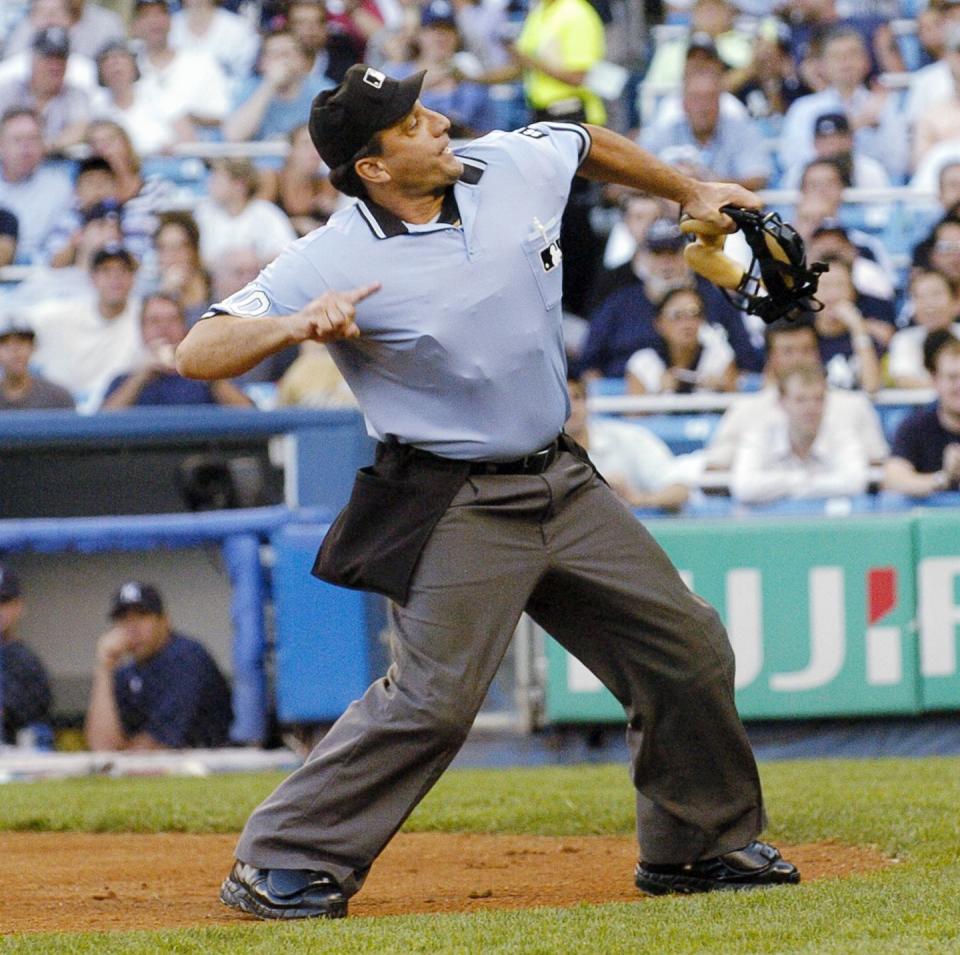
Team owners must pay a 'luxury tax' if they exceed MLB's payroll threshold.
Unlike other professional sports leagues, MLB doesn't impose a salary cap for each team—but team owners must pay a competitive balance tax if they "exceed a predetermined payroll threshold." This helps to regulate the money a given team can spend on their roster and prevent unfair advantages for wealthier teams. In late 2023, New York Mets owner Steve Cohen was charged with a tax of nearly $101 million, resulting in a new nickname for the fee: the "Cohen tax."
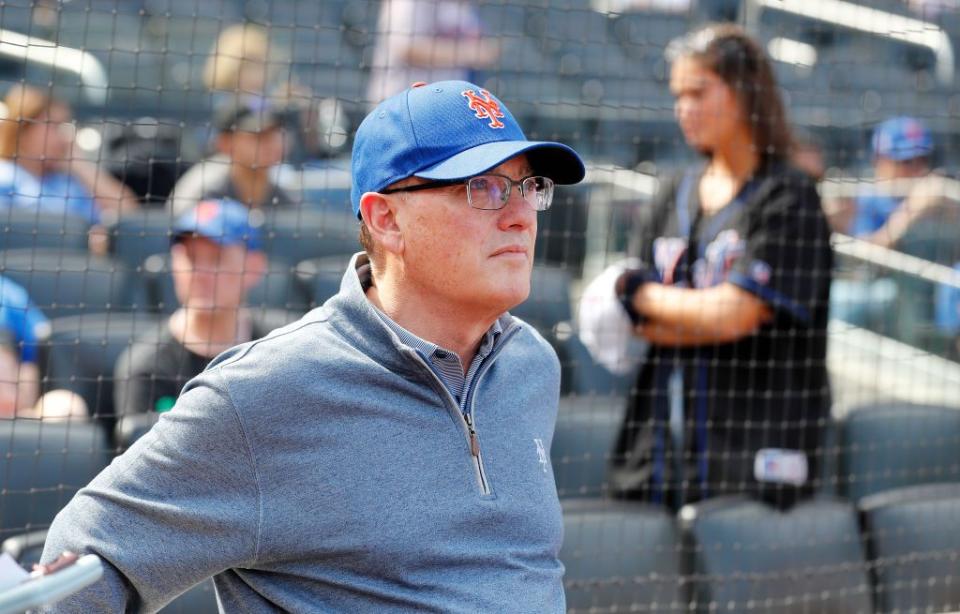
You Might Also Like

